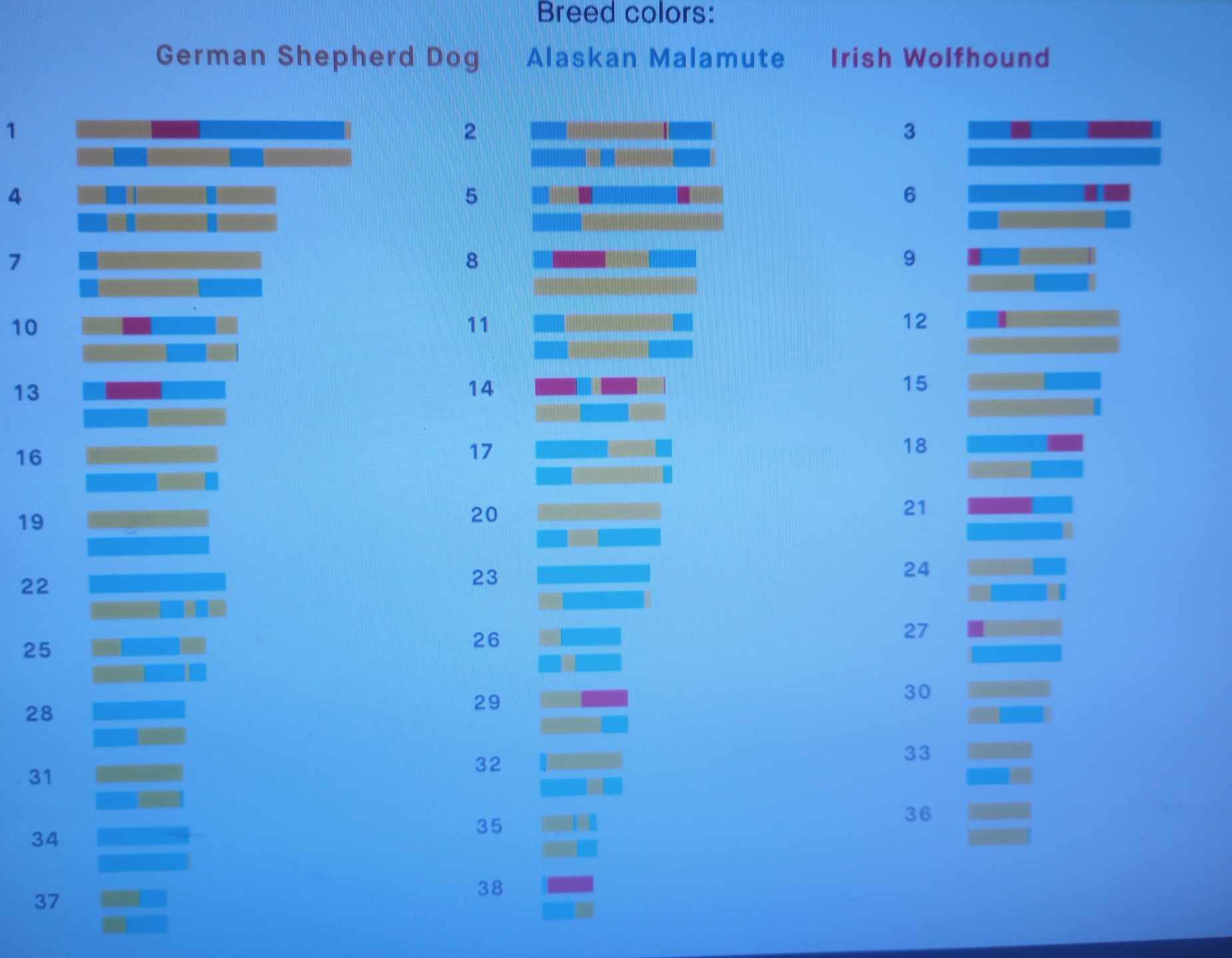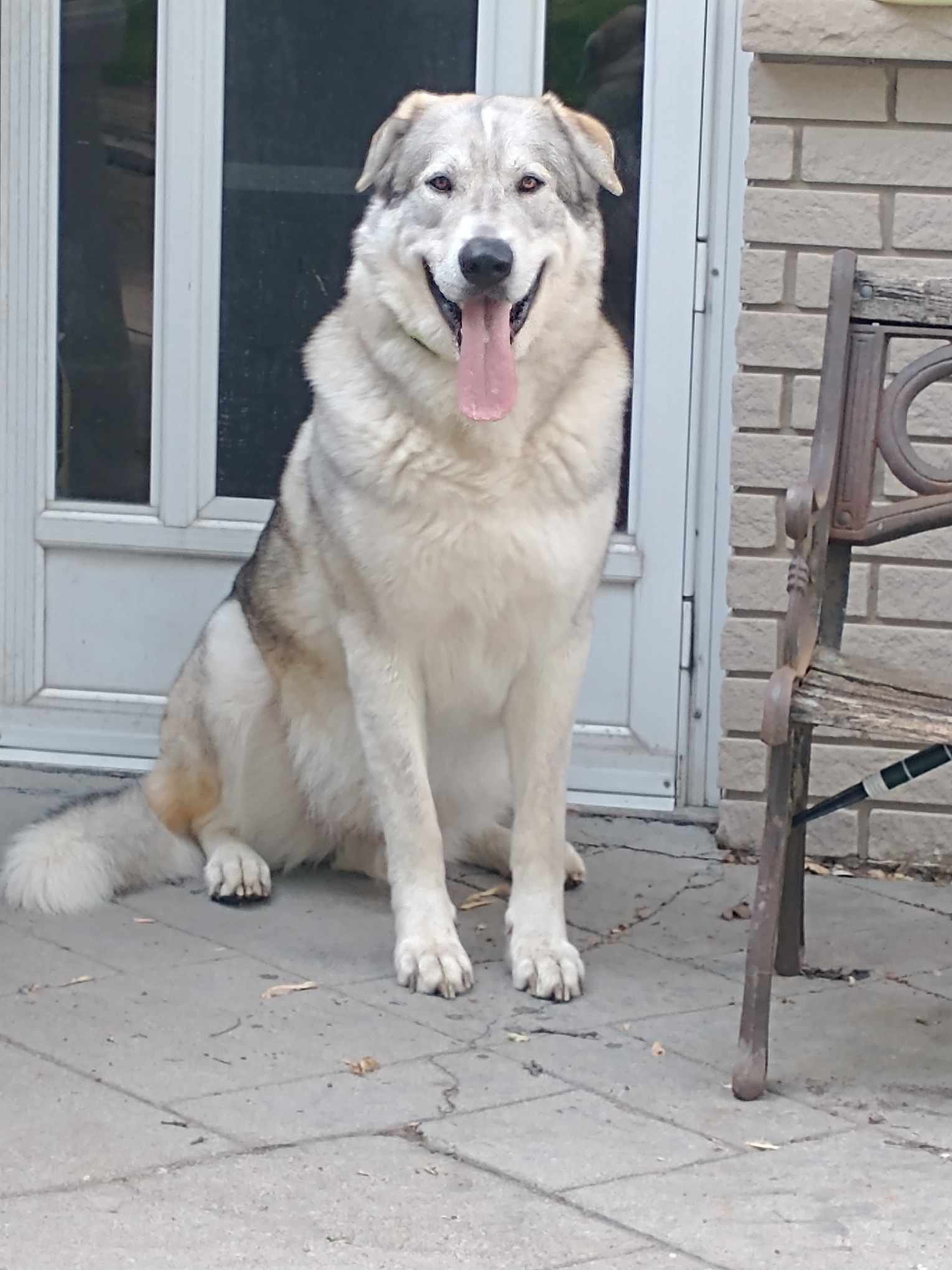How accurate are breed identification DNA tests?
By Jennifer Stoeckl, MAT - Dire Wolf Project CEO, Oct. 6, 2023
Since we have been on the topic of genetics this week…
I want to close up this week’s discussions by exploring DNA testing.
First of all, it is important to know that dogs are 98.8% similar to wolves in their DNA.
When a genetics lab looks at your dog’s DNA to determine its breed ancestry, it disregards the 98.8% of the DNA that is shared with wolves.
That leaves only 0.02% for breed ID.
Since canines have around 20,000 genes in their entire genome, DNA testing really only looks at about 400 of those genes when it analyses your dog for which breeds it represents.
It’s important to get that, because when you look at the DNA returned for your dog, you are not seeing an analysis of the entire genome, ONLY the part of the genome that is identified as domesticated dog.
So… what Embark Veterinary Services and Wisdom Panel have done is separate the 0.02% domesticated dog DNA into identifiable portions. When a breed carries a certain identifiable portion of DNA, then it is labeled as specific to that breed.
How did they first identify the specifically unique DNA combinations from each pure breed of dog?
Embark DNA testing has analyzed over 350 different purebred breeds… meaning they have identified 350+ separately inherited portions representing those breeds and ONLY those breeds. In their research, they found no other breed carries those particular gene combinations, which is how they can claim that portion is from that breed.
Then, it is simply a counting game.
A machine looks at each dog’s DNA and counts how many portions it finds that match with the 350+ known breeds with the exact same combination of genes.
Sometimes, in mixed breeds and designer breeds (like ours), the portions are so mixed up that it is difficult to determine breed matches. So, they do the best they can. It isn’t 100% accurate, but they get pretty close.
Take Lock (Essex/Narissa), for example.
We know for a fact (because we bred it) that Lock’s real ancestry has the following breeds:
- German Shepherd Dog
- Alaskan Malamute
- Irish Wolfhound
- Labrador Retriever
- Staffordshire Terrier
- Great Pyrenees
- Anatolian Shepherd Dog
The most recent purebred addition (the Alaskan Malamute) was four generations back and all others were five or more generations back.
Yet, Lock’s DNA came back from Embark DNA as follows:
- 50.2% German Shepherd Dog
- 42.9% Alaskan Malamute
- 6.9% Irish Wolfhound
Here are the portions of DNA by breed Embark Veterinary has identified:
NOTE: Lock doesn’t act anything like any of those three breeds. He is soft, gentle, calm, and compliant. Not hyper, driven or protective like the average German Shepherd Dog. Not non-compliant, goofy, or dumb like the average Alaskan Malamute. Not protective, aggressive toward fleeing animals, or prey driven like the Irish Wolfhound. Instead, through strategic selective breeding, we have taken the best of all the breeds and brought them together for a calm, loving, gentle companion dog that is aloof to strangers and highly bonded to family. Therefore, you cannot look at the breeds listed in the DNA test and assume your American Dirus dog will be anything like them. They certainly do NOT train like those individual breeds.
The next thing to know about DNA tests is they are less and less accurate the farther one goes down the generations.
Embark Veterinary Services states, “Our algorithm analyzes a dog’s DNA for the breeds and their likely proportions in the dog’s ancestry.” [Emphasis added]
They also reveal, “If you know your dog’s exact three-generation pedigree, please note that the family tree in your dog’s Embark profile may not match their registered pedigree exactly, especially in designer breeds (beyond an F1 cross).” [Emphasis added]
Wisdom Panel, another DNA testing company, explains, “Wisdom Panel 4.0 is a dog DNA test that will tell you your dog's ancestry, up to three generations.” [Emphasis added]
This is because they can’t tell which traits came from the father or the mother. They only have a “most likely” algorithm based on the simplest possible breeding to achieve those DNA results.
That says nothing about the specific goals of the Dire Wolf Project… or many other generational designer breeds.
Wanna go deeper into the differences between DNA testing facilities?
Nancy Kerns had her dog DNA tested by THREE different DNA testing sites and posted the results. VERY interesting how different they are from one another:
https://www.whole-dog-journal.com/blog/comparing-results-from-mixed-breed-dna-tests
So…
Ultimately, DNA testing facilities are NOT 100% accurate, especially in our case.
We have mixed up the genes in such a unique way for over thirty years now that they don’t formulate into easy portions from one pure breed to the next.
But the most valuable aspect of breed ID DNA testing for the American Dirus dog is that…
out of the almost TWO HUNDRED dogs
we’ve tested through Embark,
NONE have ever come back with
wolf content of any kind!
No other wolf look-a-like breed anywhere in the world can claim that!
Dire Wolf Project
100% Dog, 0% Wolf
Gain access to ALL of the DNA tests available for our breed by following the link below:
https://direwolfproject.com/direwolf-dogs/our-health-foundation/dna-health-database/
Jennifer Stoeckl is the co-founder of the Dire Wolf Project, founder of the DireWolf Guardians American Dirus Dog Training Program, and owner/operator of DireWolf Dogs of Vallecito. She lives in the beautiful inland northwest among the Ponderosa pine forests with her pack of American Dirus dogs.

